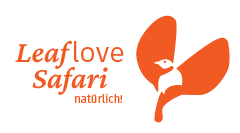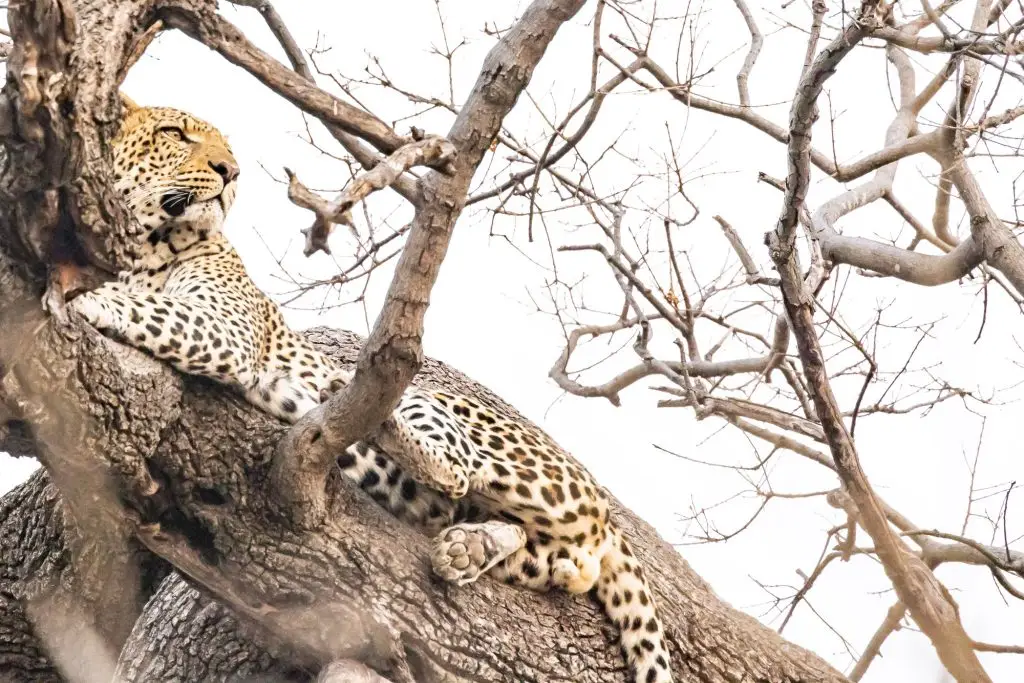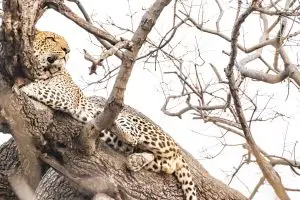The most well-known tree is the Christmas tree. After some research on its origins, I gave up, as there are numerous theories.
In the southern part of Namibia, the fragrant sweet thorn acacia Vachelia (Acacia) karoo has proven itself as a Christmas tree for us Southerners. My grandmother always kept the candles in the fridge. Just before thanks-giving, they were then put on because the extreme December heat caused the candles to melt prematurely, creating a sad sight of hanging tired candle corpses.
From September, it gets warm; from October, hot, and in December, the tourist-free and very hot tranquility sets in. Every walk in the fields is accompanied by the shrill sound waves of cicadas, and the stink bush, incidentally a caper plant, lures the dung fly with a foul smell for pollination. Walking barefoot is no longer possible, and mothers shout the familiar phrases to their children: “Where is your hat? Put on your hat!” and “Are you covered in sunscreen? Look at how Dad looks. That’s what happens when you don’t put on sunscreen,” and so on and so forth.
It is also the time of weeping trees and rattling bushes:
Cheetahs often use the horizontal trunks of the “Weeping Wattle” Peltophorum africanum as play trees, as they cannot use their claws for climbing but can elegantly leap high into the trees. Play trees serve as meeting points for cheetahs.
Unfortunately, this beautifully yellow-flowering tree is also called the “weeping acacia.” I have no idea who came up with this nonsensical name, as it is classified in the family Fabaceae, but described in the subfamily Caesalpinioideae and should not be referred to as an acacia. Some call the tree the “tear tree” … which might be a better fit.
There is also the “Raintree” Philenoptera violacea, a wonderful tree of the northeast with apple leaf-like leaves, hence also called “Apfelblatt” in German, and beautiful violet flowers.
Both trees got their names because of the larvae of the froghopper or spittlebug, also known as the “frog-hopper.” These insects create foam for protection against enemies and changing weather, causing it to drip under the trees.
The nymph of the “frog-hoppers” taps into the plant sap, pulsates it, and envelops itself with protective foam. This prevents dehydration and disguises the nymph from ants, parasitic wasps, and probably also the weather.
The foam production occurs by expelling and frothing the plant sap from their anus, similar to a cappuccino maker.
So please remember… The trees are not named for hanging leaves or a sad appearance, but because of the tears or rather excretions of the “spittlebugs.”

and a verreauxs Eagle Owl; with us on safari, you can not only watch birds but also have a chat about trees.
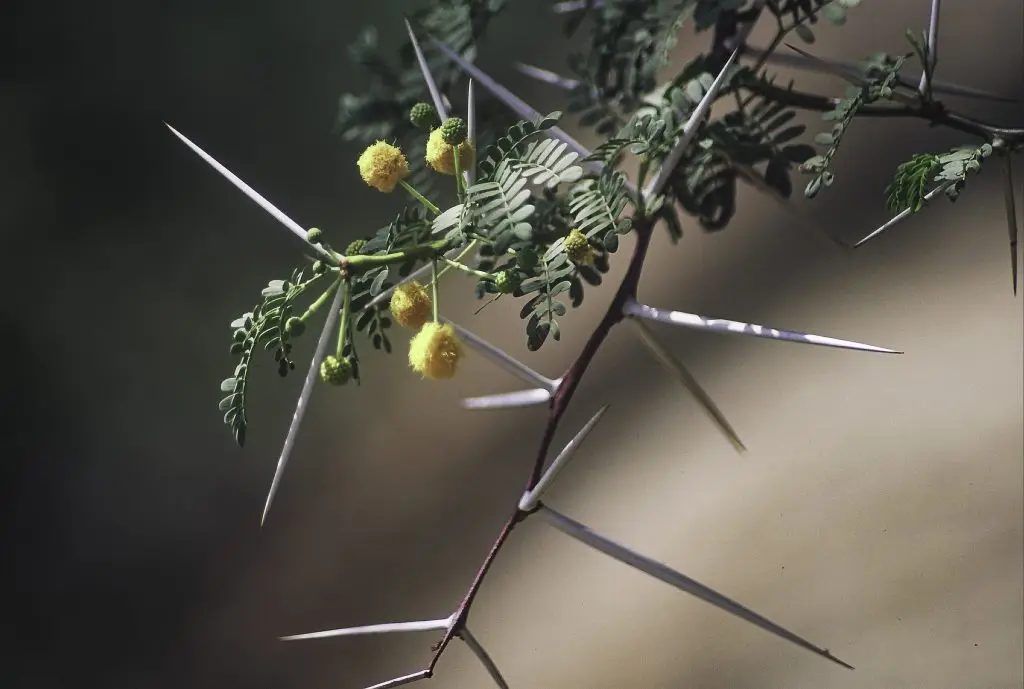
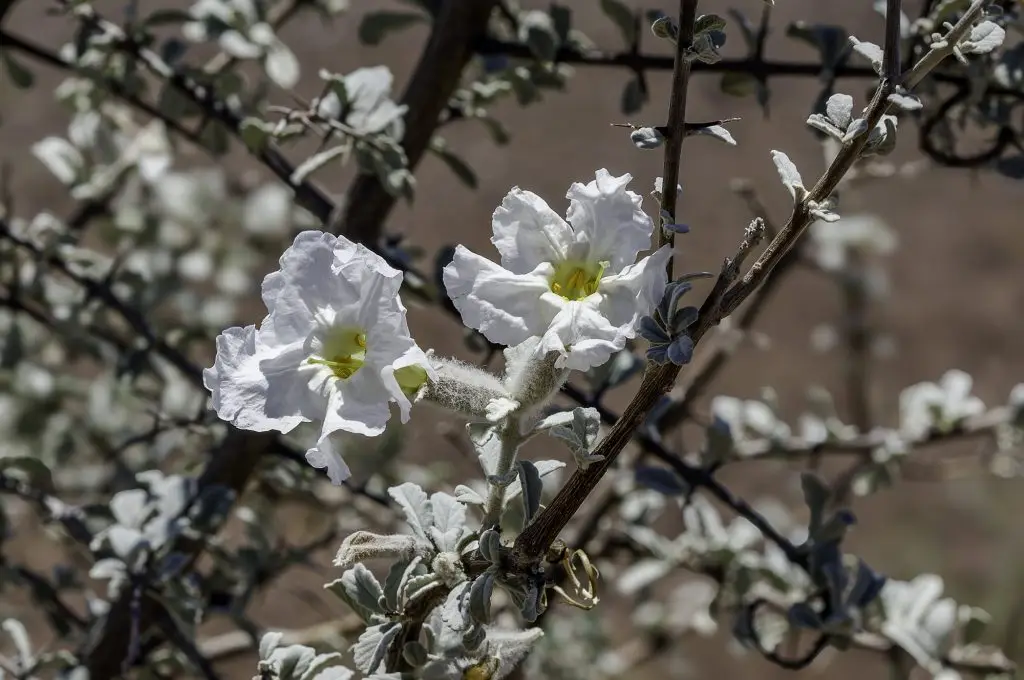
In Namibia, the bushes are rattling! Anyone who takes a few hours for themselves and goes for a walk on our farm from August to December will hear it. The pods of the blackthorn trumpet bushes Catophractes alexandri rattle so distinctly that the Nama people have given the bush the name “Gabba,” which means “to rattle.” By the way, the Gabba bush only rattles until the first rain, as it then blooms beautifully in trumpet-shaped white flowers and quickly acquires new “little boats” as pods, which are often released into the water by the children of the Southwest.
“Don’t be disappointed, Angelica,”
she was told because the southern part of Namibia, especially the hours-long drive, was considered boring. A brief consideration of whether the southern part of Namibia is worth it, this desolate nothingness, barely any animals, “oh well,” and suddenly the southern part of Namibia is removed from the travel plans… a mistake?
We all still had almost full glasses; the gin and tonic were, of course, poured as a “double,” and even though we were sitting by the fire, it wasn’t always necessary to talk. The fire was entertaining enough, and I was pleased that the group under Didi’s guidance had come so happily from the southern part of Namibia to us on the farm, to our Leaflove – happy place. Didi explained the stars, and I enjoyed once again feeling rooted in Namibia – one can only feel this way here!
Tomorrow, cattle would be assessed, farm work explained, giraffes and antelopes photographed, and the peculiarities of botany in the south elucidated. The day after tomorrow, the visit to the Büllsport Farm in the Naukluft was on the agenda since the ladies wanted to ride the noble horses of the Büllsport breeding.
While grilling, incidentally the finest lamb from my 8-year-old son’s own breeding, the conversation turned to the newly born twins of his best ewe, named “Flecki.” “His rifle seems to spread a bit,” commented, I think it was Jeannette, on the buck’s competence.

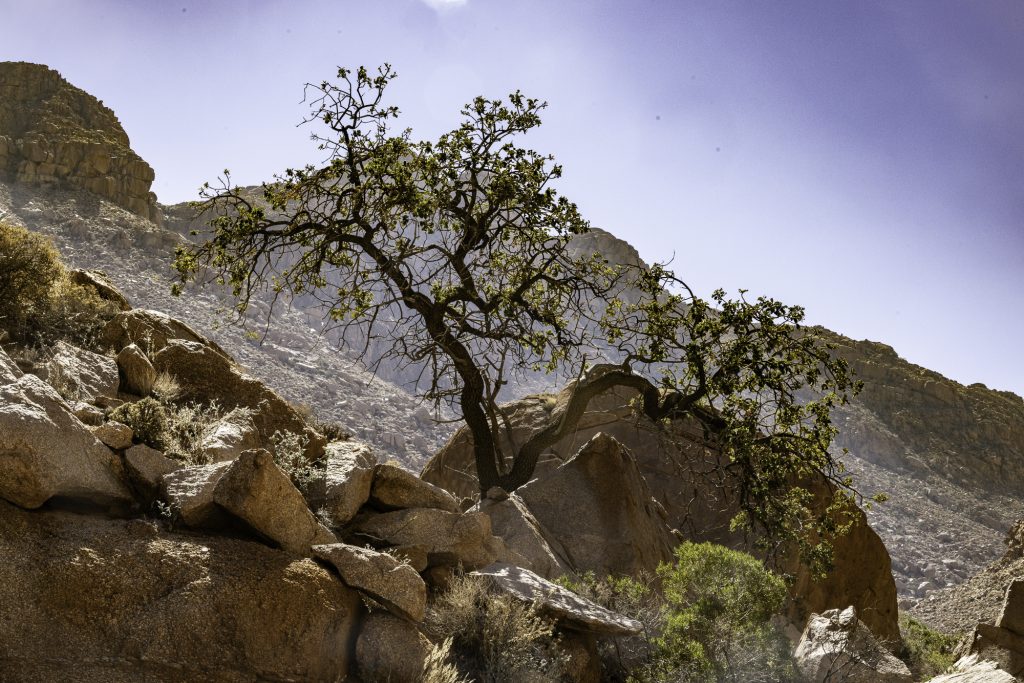
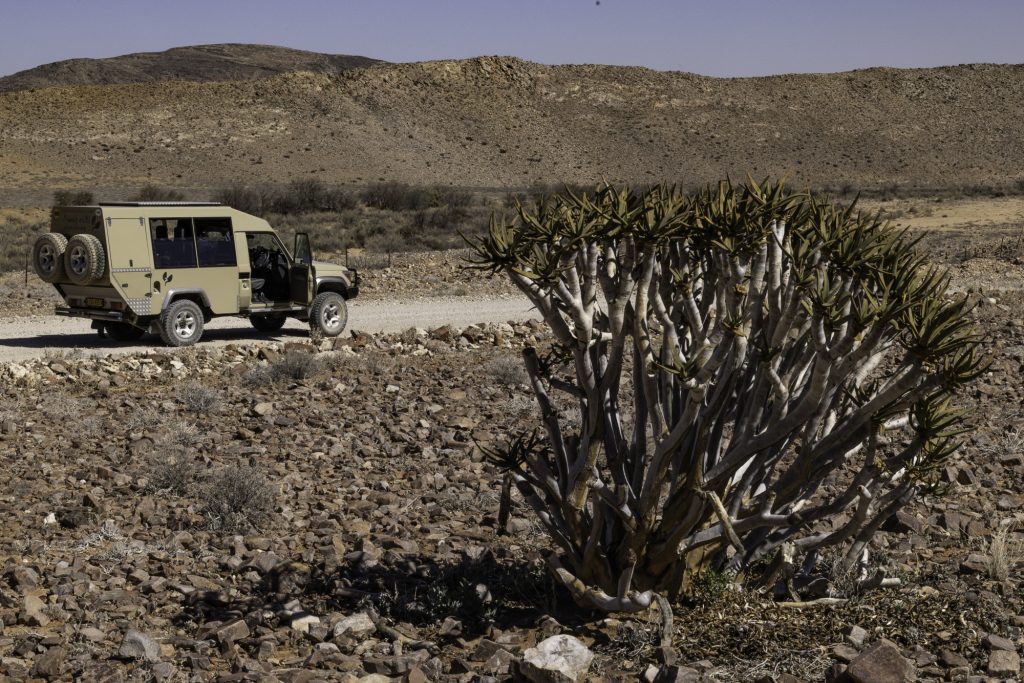
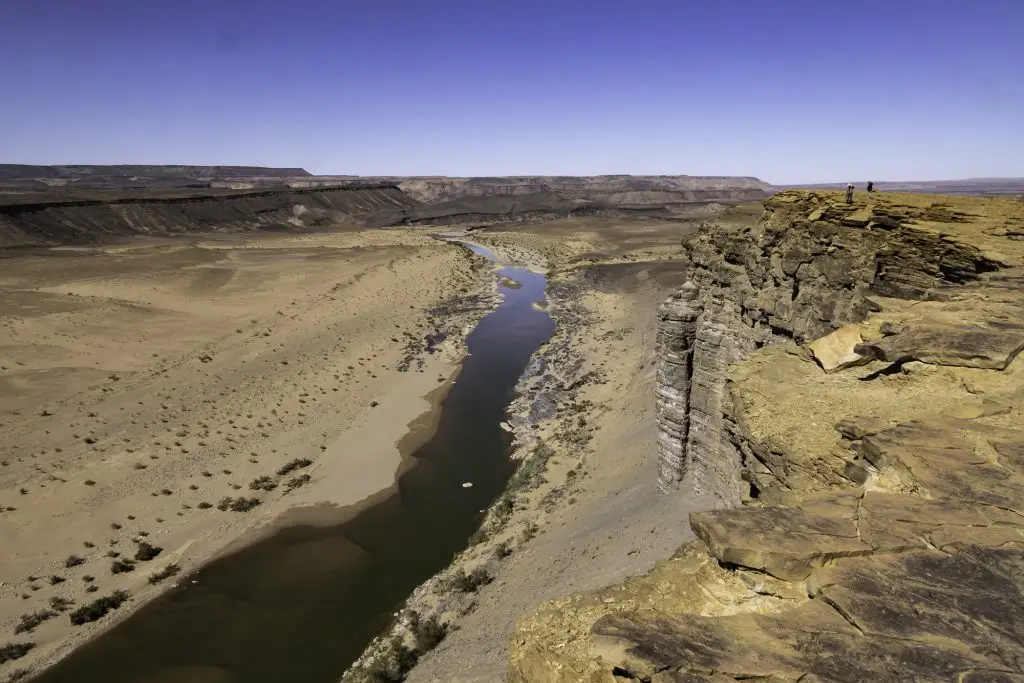
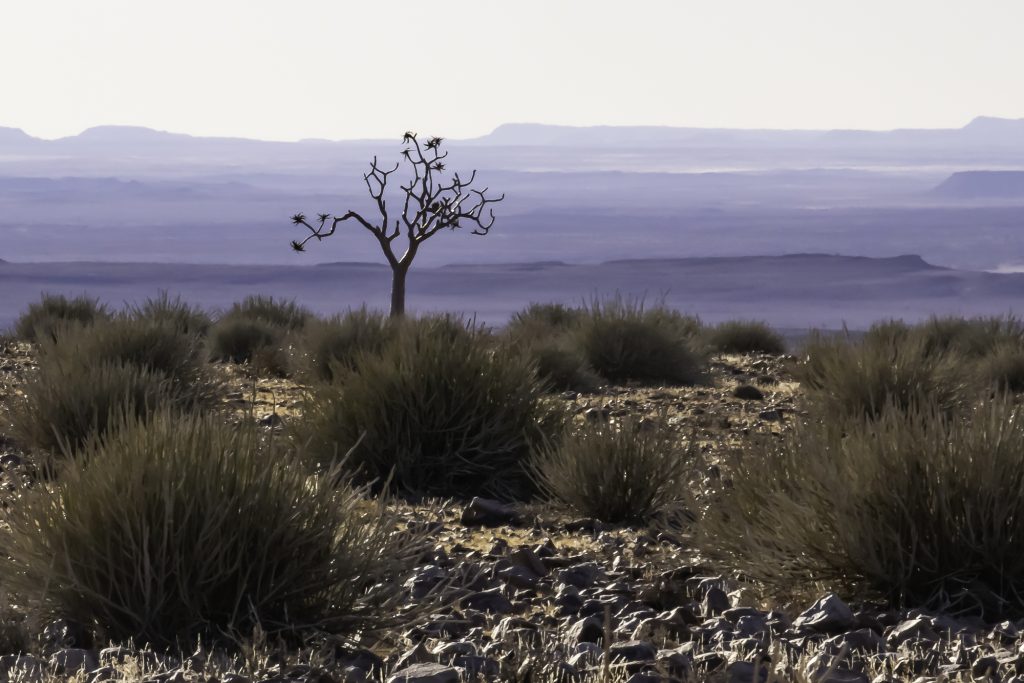
There was a lot of laughter, and about their journey to the southern part of Namibia, which in my opinion is “the real Southwest,” the following comments were made:
“Our trip was a dream, and I’ve already told Didi that she goes into the memory chest in the drawer for special delights.”
“The feeling of freedom! Because where do you drive hundreds of kilometers and encounter only one car?”
“A luxury paradise in the midst of the dune world… fantastic and hardly imaginable.”
“I felt very well at Thorsten and Lynn in Namtib. Thorsten’s comment: Where else do you have a driveway of 12 km?”
“The kindness and warmth of the people.”
“Being taken in as a personal guest felt good. Your commitment and love for your country are and will remain unforgettable. I would have preferred to stay!”
Here is the link to this trip: [Link]
—-
A big thank you to Birdingtours for using us as the local “executive” for optimal birding trips in Namibia; they know who the best are here :-). In November, our esteemed guests had to brave the dry, sweltering heat, but we saw extremely special sightings. Almost all “Namibian Specials” such as the Namib Scrub Robin, the Red Dune Lark, the Hartlaub’s Francolin, and others could be wonderfully spotted. Barred Owlets, Narina Trogon, and rare African Snipes, along with various antelopes, giraffes, zebras (two species with two subspecies), pachyderms, and big cats, found their way onto lists and memory cards. There is also a trip report available for this.
Rainer Stoll from Birdingtours even visited us on the farm, spotted two “lifers,” and engaged in many discussions on how to create a better place from the earth, promote sustainable travel, and protect nature. Remarkably, Rainer is dedicated to nature and strives for a balance in the human-animal-nature-economy conflict.
The trip in September 2024 is already fully booked, but I highly recommend the trip in February 2025, and the trip in November 2025 is already in the works.
—-
Very important, I will definitely put together one or the other additional tour during or after the trade fair in January. So, anyone who is interested in joining should regularly stroll through our Join-us pages… don’t forget!
—-
Nature conservation in tourism is often just a lip service that ends up as “greenwashing.” I do not want to philosophize extensively about right or wrong here, but one thing is certain: Those who protect the land preserve the habitat and, in turn, all the animals living there.
Over the weekend, we were guests at the farms of Ondili Lodges. Lisa runs a successful design studio and values art, as well as a design-oriented clientele, from which friendships often emerge, and people visit each other in the countryside – typical for Namibia.
I love driving through “untouched and re-established” areas. I observe how rare grasses are not ruthlessly grazed, trees are gently nibbled by giraffes and not cut down by locals, spoonbills lose their shyness towards vehicles, and there is a sense of peace on the fields away from human interference.
Since the owner invests significant sums in his lodges, creates many jobs, and wants it to be “super nice for his guests,” these lodges come at a price and are not accessible to everyone. After a short, friendly exchange, it boiled down to something like “Give me a good price as a direct provider from Namibia.”
A man of his word – said and done – and thus, the “Ondili Meumbo” journey was born, offering top quality in prime locations at an unbeatable direct price. For now, we offer it as a guided individual tour and as a self-drive tour under “Ondili Natura,” but soon one or two scheduled group trips for additional participants will follow.
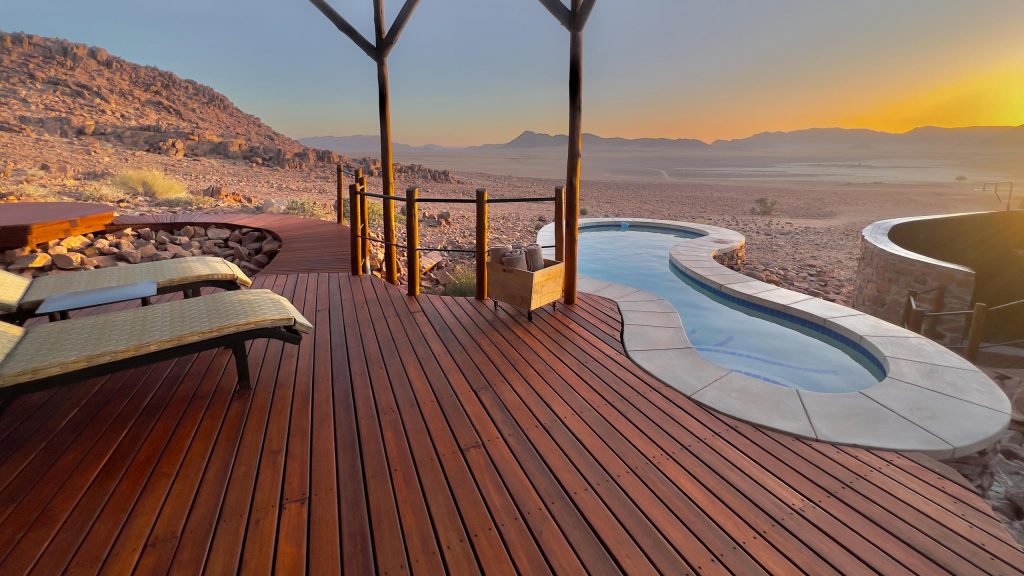
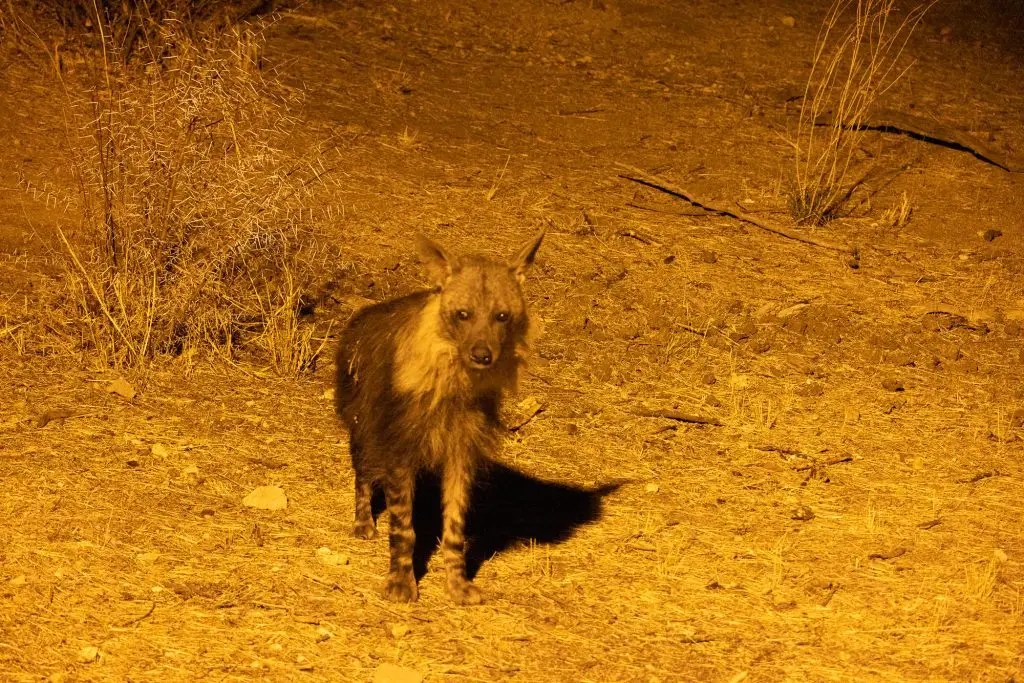

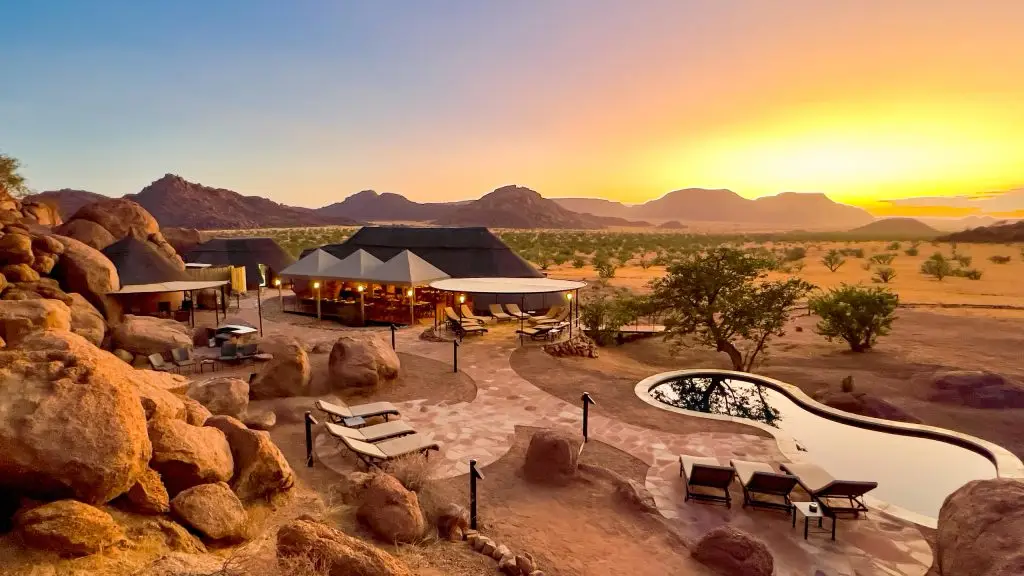
—
PS:
Here in Namibia, it is currently not just very hot but scorching! This reminds me of my grandfather’s story when he came for a “visit to Germany” (that’s what it was actually called back then… long before tourism existed) and mentioned that it was unbearable with 45°C in the shade.
He just said, “Well, you’re silly, why are you staying in the shade then!?
Last Updated on 2. June 2024 by Albert Voigts von Schütz
